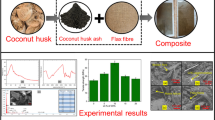Abstract
The present study is a supplement to Epmeier and Kliger (2005), which investigated the effect of three different modification methods (acetylation, modification with methylated melamine resin and heat treatment in vegetable oil) on four material properties (density, modulus of elasticity (MOE), creep deflection and relative creep) and their inter-relations. In this study, another modification method (furfurylation) and four additional material parameters (“relative stiffness”, i.e. MOE/density, moisture content, change in moisture content and anti-creep efficiency) and their correlations are included. In addition, the creep curves were analysed to assess the development of bending creep performance. The properties were assessed by experimental work on 132 specimens of Scots pine sapwood with dimensions of 45×70×1100 mm3. It was found that modification leads to significant changes in material properties. Furfurylation increases density and reduces creep deflection, relative creep and moisture content. Modified timber tends to deflect and creep significantly less than untreated timber. However, the extent of reduction in relative creep appears not to be related to the extent of reduction in creep deflection. Initial deflection and/or modulus of elasticity are suitable for predicting the creep deflection of untreated and modified timber.
Zusammenfassung
Der vorliegende Artikel ist eine Ergänzung zu Epmeier und Kliger (2005), worin die Auswirkungen dreier Modifikationen (Acetylierung, Modifizierung mit methyliertem Melaminharz und Wärmebehandlung im Ölbad) an vier Materialeigenschaften (Rohdichte, Elastizitätsmodul (MOE), Kriechverformung und relatives Kriechen) und deren Korrelationen untersucht wurden. Die vorliegende Arbeit umfasst eine weitere Modifikationsmethode (Furfurylierung) und vier zusätzliche Materialeigenschaften (,,relative Steifigkeit‘‘ definiert als MOE/Dichte, Holzfeuchte, Änderungen der Holzfeuchte und Anti-Kriech-Effizienz) und deren Korrelationen. Außerdem wurde anhand der Kriechkurven die Entwicklung des Biegekriechverhaltens untersucht. Die Materialeigenschaften wurden experimentell an 132 Proben aus Kiefernsplintholz mit den Abmessungen 45×70×1100 mm3 untersucht. Es zeigte sich, dass die Modifikationen zu signifikanten Änderungen der Materialeigenschaften führten. Furfurylierung erhöht die Rohdichte und reduziert die Kriechverformung, das relative Kriechen und die Holzfeuchte. Modifiziertes Holz kriecht signifikant weniger als unbehandeltes Holz. Allerdings scheint die Reduktion des relativen Kriechens und der Kriechverformung nicht aneinander gekoppelt zu sein. Die initielle Verformung bzw. Elastizitätsmodul eignen sich zur Vorhersage der Kriechverformung von unbehandeltem und modifiziertem Holz.
Similar content being viewed by others
References
Bengtsson C, Kliger R (2003) Bending creep of High-temperature dried spruce timber. Holzforschung 57:95–100
Bengtsson C (2001) “Short-term” mechano-sorptive creep of well-defined spruce timber. Holz Roh- Werkst 59:117–128
Epmeier H (2003) Properties of chemically modified wood. Thesis for the degree of licentiate of engineering. Chalmers University of Technology, Göteborg, Sweden
Epmeier H, Kliger R (2005) Experimental study of material properties of modified Scots pine. Holz Roh- Werkst 63:430–436
Hauška M, Bučar B (1996) Mechano-sorptive creep in adult, juvenile and reaction wood. Proceedings of the International COST 508 Wood Mechanics Conference, Stuttgart, Germany
Holzer SM, Loferski JR, Dillard DA (1989) A review of creep in wood: concepts relevant to develop long-term behaviour predictions for wood structures. Wood Fiber Sci 21(4):376–392
Hunt D, Gril J (1998) Comparison between juvenile and mature wood in the analysis of creep. Proceedings of COST Action E8 Mechanical Performance of Wood and Wood Products, Florence, Italy
Kojima Y, Yamamoto H (2004) Effect of microfibril angle on the longitudinal tensile creep behaviour of wood. J Wood Sci 50:301–306
Lu JP, Leicester RH (1997) Mechano-sorptive effects on timber creep. Wood Sci Technol 31(5):331–337
Matar A, Hunt D (2003) Progress in modelling on reversible and irreversible mechano-sorptive creep of softwood. Proceedings of the Second International Conference of the European Society for Wood Mechanics, Stockholm, Sweden
Mohager S (1987) Studier av krypning hos trä med särskild hänsyn till inverkan av konstanta och cykliskt varierande fukttillstånd. Doctoral thesis, Royal Institute of Techno-logy, Department of Building Materials, TRITA-BYMA 1987:1
Norimoto M, Gril J, Rowell RM (1992) Rheological properties of chemically modified wood: Relationship between dimensional stability and creep stability. Wood Fiber Sci 24(1):25–35
Author information
Authors and Affiliations
Corresponding author
Rights and permissions
About this article
Cite this article
Epmeier, H., Johansson, M., Kliger, R. et al. Bending creep performance of modified timber . Holz Roh Werkst 65, 343–351 (2007). https://doi.org/10.1007/s00107-007-0189-1
Published:
Issue Date:
DOI: https://doi.org/10.1007/s00107-007-0189-1




